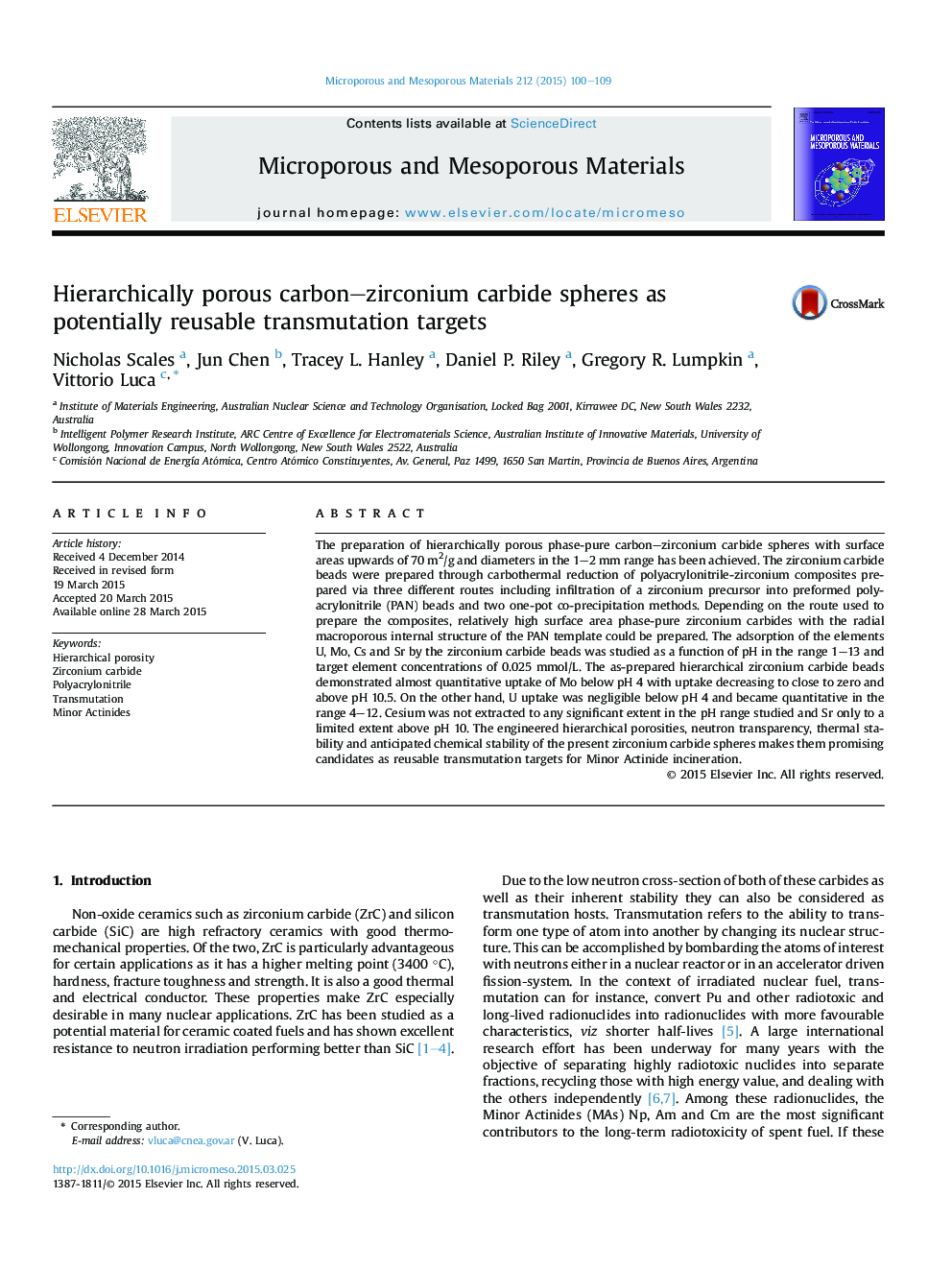| Article ID | Journal | Published Year | Pages | File Type |
|---|---|---|---|---|
| 72494 | Microporous and Mesoporous Materials | 2015 | 10 Pages |
•One-pot preparation of hierarchically porous zirconium carbide spheres.•Phase-pure materials generated through low-temperature carbothermal reduction.•Adsorption properties of ZrC beads reported for the first time.
The preparation of hierarchically porous phase-pure carbon–zirconium carbide spheres with surface areas upwards of 70 m2/g and diameters in the 1–2 mm range has been achieved. The zirconium carbide beads were prepared through carbothermal reduction of polyacrylonitrile-zirconium composites prepared via three different routes including infiltration of a zirconium precursor into preformed polyacrylonitrile (PAN) beads and two one-pot co-precipitation methods. Depending on the route used to prepare the composites, relatively high surface area phase-pure zirconium carbides with the radial macroporous internal structure of the PAN template could be prepared. The adsorption of the elements U, Mo, Cs and Sr by the zirconium carbide beads was studied as a function of pH in the range 1–13 and target element concentrations of 0.025 mmol/L. The as-prepared hierarchical zirconium carbide beads demonstrated almost quantitative uptake of Mo below pH 4 with uptake decreasing to close to zero and above pH 10.5. On the other hand, U uptake was negligible below pH 4 and became quantitative in the range 4–12. Cesium was not extracted to any significant extent in the pH range studied and Sr only to a limited extent above pH 10. The engineered hierarchical porosities, neutron transparency, thermal stability and anticipated chemical stability of the present zirconium carbide spheres makes them promising candidates as reusable transmutation targets for Minor Actinide incineration.
Graphical abstractFigure optionsDownload full-size imageDownload as PowerPoint slide
